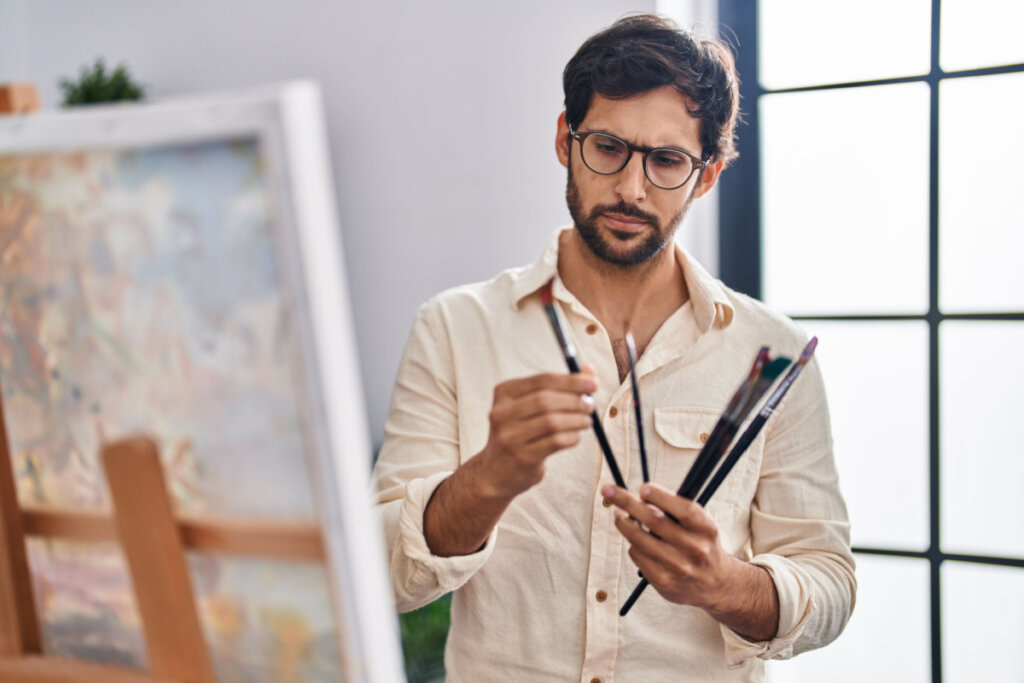The Creative Personality, According to Mihály Csíkszentmihályi

One of the central themes of Mihály Csíkszentmihályi’s work was creativity. He interviewed 91 people in depth who stood out for their creative work. This allowed him to make a detailed description of the creative personality based on ten traits.
Asked about the definition of creative personality, Mihály Csíkszentmihályi claimed that he could summarize it in one word: complexity. He was referring to the fact that creators tend to have great contrasts in their way of being. They’re usually ‘extreme’ people: aggressive and cooperative, introverted and extroverted, etc., at the same time. However, they only behave one way or another at a time, depending on the circumstances.
Csíkszentmihályi is known for being the creator of flow theory. He proposed that the creative personality is characterized by its multidimensionality. He said that it’s as if, within this type of personality, there’s not one individual, but a multitude. In fact, he proposed the existence of ten basic traits.
“If I had to express in one word what makes their personalities different to others, it would be complexity.”
Mihaly Csíkszentmihályi

The role of physical energy in the creative personality
Physical energy isn’t one of the traits that come to mind when talking about creative personalities. However, Csíkszentmihályi found that these people are capable of going through stages of great physical exhaustion especially when their projects demand it. They also experience periods of complete rest and calm.
They’re brilliant and naive at the same time
Another paradoxical trait in creative personalities is that they can be quite sharp and clever in some aspects, but also extremely naive in others. This idea is embodied in the stereotype of the genius who creates wonderful inventions but has no idea how to dress or tie his shoelaces.
Fun and discipline at the same time
Csíkszentmihályi found escapist traits in the creative personality. He discovered that creators tend to apply great discipline to their work but, at the same time, take periodic breaks from it to engage in trivial activities. They might even use this time to satisfy unhealthy habits or addictions.
Fantasy and realism
It’s extremely common for creative people to be really strict and methodical when approaching certain aspects of their work. However, they occasionally also take paths that are downright crazy. Therefore, they’re both highly imaginative and rational. Both are traits that are difficult to balance.
Extroverts and introverts
Creative people tend to become extremely talkative and exultant when they’re in the finishing stages of their projects. That said, if they’re in the formative phases or have encountered obstacles they seem to completely withdraw from the world and it’s really difficult to get a word out of them.
Too much humility and pride at the same time
They often display traits of extreme humility when forming or testing their ideas. In fact, they always doubt whether or not they’ll be able to achieve a result and are often really strict with themselves. If they get what they want, they go to the opposite extreme. They think that there’s no one better than them and they succumb to their pride.
They escape sexual stereotypes
Another trait of the creative personality is that they show great independence in the face of stereotypes of what a woman or a man ‘should’ be. Indeed, they frequently transgress the behavior patterns that the environment imposes on them. This means they often express themselves without gender ties.
Conservatives and rebels
More often than not, creative people first strive to know and master the established parameters in a given field of art or knowledge. They try to stick to them. Later, they do the opposite. They focus on breaking the schemas they’ve learned.
Extremely passionate yet uninvolved
The creative personality is one of extremes. They often put their best efforts into what they do. In fact, they tend to be passionate about doing so. However, once they’re finished, it seems as if they’re no longer interested. They may even criticize their work and end up throwing it away if there’s nobody to stop them.

They experience pain and pleasure with equal intensity
Creative individuals suffer. They usually expose themselves to pain voluntarily and are also really sensitive to the pain of others. They live it, savor it and recreate it. At the same time, they seek pleasure with great zeal. In fact, they’re capable of reaching excesses in their search. Consequently, they have a hard time reaching the middle ground.
Mihály Csíkszentmihályi went so far as to say that everyone has the germ of a creative personality inside them. Nevertheless, education usually induces us to develop only one of the poles of our abilities and our way of being. Csíkszentmihályi believed that all those other dimensions remain in the background, waiting for the opportunity to express themselves.
All cited sources were thoroughly reviewed by our team to ensure their quality, reliability, currency, and validity. The bibliography of this article was considered reliable and of academic or scientific accuracy.
- Abuhamdeh, S., & Csikszentmihalyi, M. (2014). The artistic personality: A systems perspective. In The systems model of creativity (pp. 227-237). Springer, Dordrecht.
- Conde, L. (2012). La personalidad creativa: un sistema complejo. Eduardo Chillida y Mihaly Csikszentmihalyi.
- Martínez, O. L., & Lozano, J. N. (2010). Rasgos de personalidad y desarrollo de la creatividad. Anales de Psicología/Annals of Psychology, 26(1), 151-158.
This text is provided for informational purposes only and does not replace consultation with a professional. If in doubt, consult your specialist.








